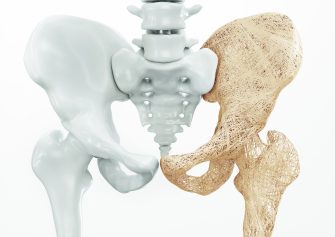Path to Strong Bones: Exercise, Calcium & Vitamin D
 Osteoporosis may be a common part of aging, but there are simple steps you can take to help defend your bones against this disease. Of course, the best prevention is to have strong, healthy bones in your 30’s and then take steps to minimize bone loss. Still, for those for whom that age has already passed, it’s not too late to take action. You may be able to preserve the bone you currently have and possibly even replace some that has already been lost!
Osteoporosis may be a common part of aging, but there are simple steps you can take to help defend your bones against this disease. Of course, the best prevention is to have strong, healthy bones in your 30’s and then take steps to minimize bone loss. Still, for those for whom that age has already passed, it’s not too late to take action. You may be able to preserve the bone you currently have and possibly even replace some that has already been lost!
The primary way to do this is daily weight-bearing exercise. This doesn’t have to mean joining a gym to lift weights – it can be as simple as walking! The two other vital factors are calcium and vitamin D.
Calcium is well known for its role in building bone and slowing bone loss. The USRDA for calcium is 1,000 mg per day for adults and 1,200 for adults over 50. As we age, the intestines become less efficient at absorbing calcium from food and the kidneys do not conserve calcium as well. Therefore, the body may draw calcium from the bones in order to perform important functions.
However, it is unwise to start taking massive calcium supplementation. For best results, you should get most of your calcium from your diet. Some studies suggest that too much calcium can be detrimental, so use caution and consult a doctor if you question how much calcium you need.
Calcium does not work alone to build bone, other vitamins and minerals, especially vitamin D, also play an important role. Vitamin D helps the body absorb calcium and may help prevent osteoporosis. In the U.S., milk, as well as some breakfast cereals, yogurts, juices and other foods are fortified with Vitamin D.
A small amount of sun exposure can help the body create its own Vitamin D. Only 5-30 minutes of sunlight between 10:00 am and 3:00 pm twice a week, without sunscreen, may be enough. Those with fair skin, that may burn more easily, should limit their time to only 10 minutes or less to avoid increasing skin cancer risk. Again, natural sources of the vitamin are preferred, but if food and sun exposure are not adequate, some experts suggest getting 1,000 IU of vitamin D from supplementation.
Doctors of chiropractic are well versed in the care of the skeletal system. They can provide you with dietary suggestions to help ensure you are getting a good variety of vitamins and minerals from natural sources. Additionally, chiropractors can order laboratory tests to check the current levels of Vitamin D and Calcium in your body to help you determine if you need additional supplementation, treatment or a referral to another health care provider, if needed.
SOURCE: “Two keys to strong bones: Calcium and Vitamin D.” Harvard Health Publishing.
https://www.health.harvard.edu/womens-health/two-keys-to-strong-bones-calcium-and-vitamin-d